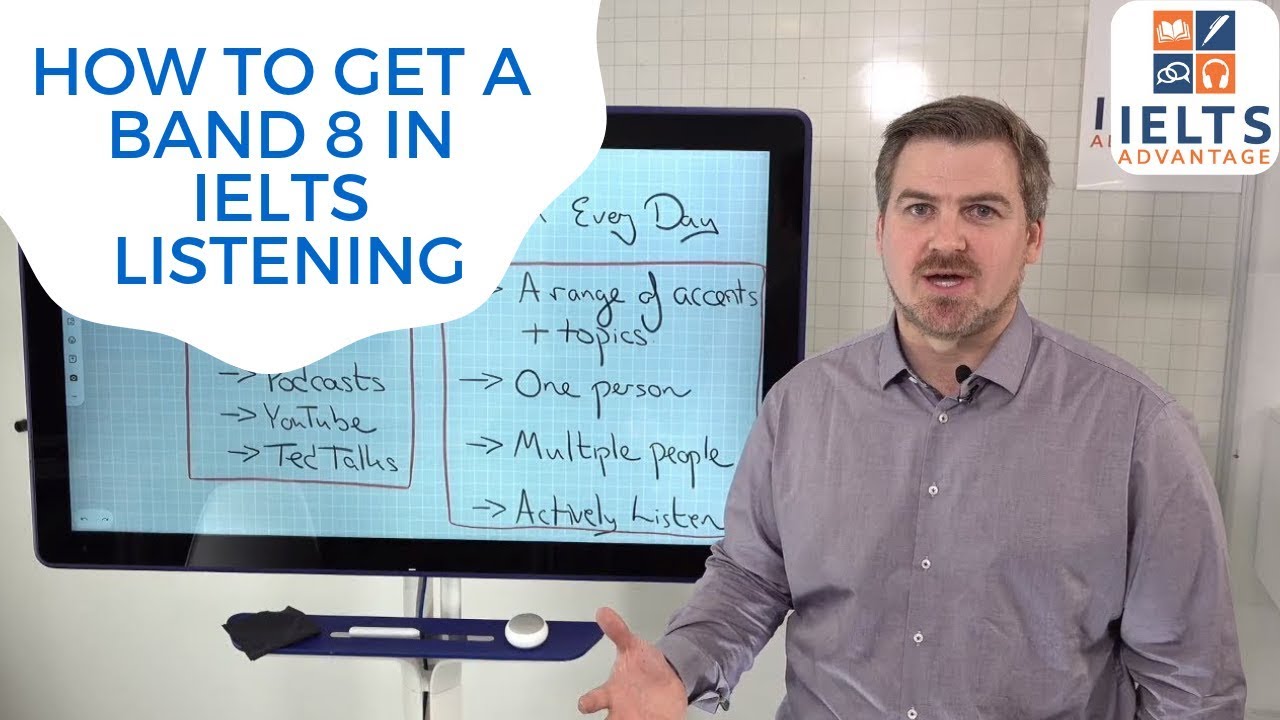Learn All 19 Question Types (2024 Duolingo English Test Format)
Summary
TLDRThis lesson outlines the 19 question types on the Duolingo English Test (DET), structured across five sections. It covers initial comprehension, including read and select, fill in the blanks, and reading aloud. The comprehension section features read and complete, read aloud, and listen and type. Interactive comprehension involves interactive reading and listening, with tasks like completing sentences and summarizing conversations. The production section focuses on writing and speaking, with tasks like describing photos, interactive writing, and speaking about topics. The final shared section includes writing and speaking samples for recipients to evaluate English proficiency.
Takeaways
- 📚 The Dualingo English Test (DET) is structured into five sections with a total of 19 question types.
- 🔍 The first section, Initial Comprehension, includes 'Read and Select' to identify real English words and 'Fill in the Blanks' with missing letters.
- 📝 In the Comprehension section, 'Read and Complete' expands on 'Fill in the Blanks' with multiple words in a paragraph, 'Read Aloud' requires recording a statement, and 'Listen and Type' involves transcribing a heard statement.
- 👂 The Interactive Comprehension section is complex, with 'Interactive Reading' and 'Interactive Listening', both involving sets of questions with various tasks such as completing sentences and summarizing conversations.
- 📖 'Interactive Reading' includes completing sentences, filling in missing sentences, highlighting answers, identifying main ideas, and selecting titles for passages.
- 🗣️ 'Interactive Listening' simulates a conversation with 'Listen and Respond' questions and a final 'Summarize the Conversation' task.
- ✍️ The Production section focuses on writing and speaking tasks, such as 'Write About the Photo', 'Interactive Writing' with two related prompts, and 'Listen Then Speak' with a 90-second response time.
- 📷 'Speak About the Photo' and 'Read Then Speak' are speaking tasks where test takers describe or respond to a topic within a given time limit.
- 📝 The final section of the test includes 'Shared Question Types', where responses to the 'Writing Sample' and 'Speaking Sample' are sent with scores for additional evaluation.
- ⏱️ Time limits are crucial for tasks like 'Summarize the Conversation' and speaking tasks, with specific durations for each activity.
- 🔄 Dualingo provides immediate feedback for incorrect answers during 'Interactive Listening' to help continue the conversation.
Q & A
What is the main focus of the Dualingo English Test (DET)?
-The Dualingo English Test (DET) focuses on assessing English language proficiency through various question types spread across five sections.
How many question types are covered in the initial comprehension section of the DET?
-There are two question types in the initial comprehension section: 'Read and Select' and 'Fill in the Blanks'.
What is the purpose of the 'Read and Select' question type in the DET?
-In the 'Read and Select' question type, test takers are given a word and must determine whether it is a real English word or not.
How many times can you record your response for speaking questions on the Dualingo English Test?
-For speaking questions on the Dualingo English Test, you can only record yourself one time.
What is the 'Listen and Type' question type in the DET and how many times can you listen to the recording?
-The 'Listen and Type' question type requires test takers to type out a statement they hear in a recording, which they can listen to up to three times.
How many sets of questions are there in the interactive reading section of the DET?
-There are two sets of six questions each in the interactive reading section of the DET.
What is the 'Complete the Sentences' question type in the interactive reading section of the DET?
-The 'Complete the Sentences' question type in the interactive reading section involves filling in the missing words from a passage.
What is the 'Write About the Photo' question type in the production section of the DET?
-In the 'Write About the Photo' question type, test takers are given a photo and must describe it for up to one minute.
What is the 'Interactive Writing' question type and how long do you have to write about each topic?
-The 'Interactive Writing' question type requires test takers to write about a given topic for up to five minutes, followed by a related second prompt for an additional three minutes.
How many times can you listen to the other person in the 'Listen and Respond' questions of the interactive listening section?
-In the 'Listen and Respond' questions of the interactive listening section, you can only listen to what the other person says one time.
What are the shared question types at the end of the DET and how do they differ from the rest?
-The shared question types at the end of the DET are the 'Writing Sample' and 'Speaking Sample'. They differ as the responses to these questions are sent along with the scores for recipients to evaluate the test taker's English proficiency.
Outlines

This section is available to paid users only. Please upgrade to access this part.
Upgrade NowMindmap

This section is available to paid users only. Please upgrade to access this part.
Upgrade NowKeywords

This section is available to paid users only. Please upgrade to access this part.
Upgrade NowHighlights

This section is available to paid users only. Please upgrade to access this part.
Upgrade NowTranscripts

This section is available to paid users only. Please upgrade to access this part.
Upgrade NowBrowse More Related Video

Belajar Duolingo English Test buat IISMA Tanpa Les! | #AsamGaram

TOEIC Listening & Reading Overview

NEW subscores and score reports! Everything you need to know

How To Pass Question 4 Of AQA English Language Paper 1 Exam (Student Statement) | GCSE Model Answer!

How to get a Band 8 in IELTS listening

Day 30 - 30 Hari Mahir Bahasa Inggris dari NOL
5.0 / 5 (0 votes)